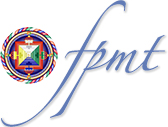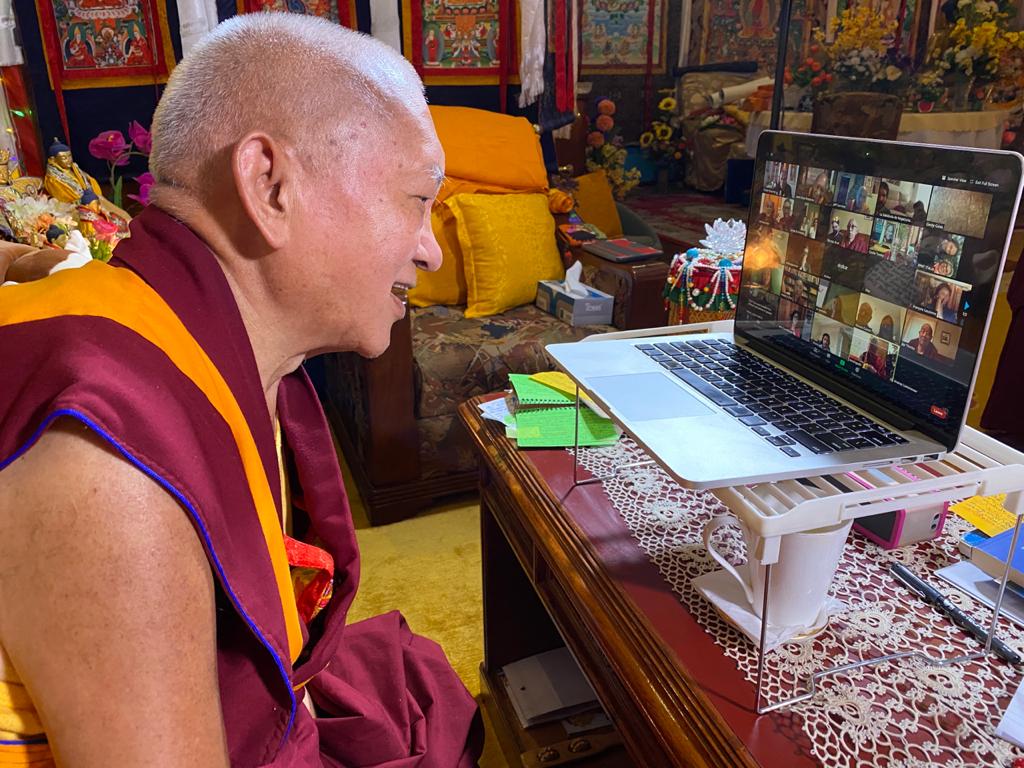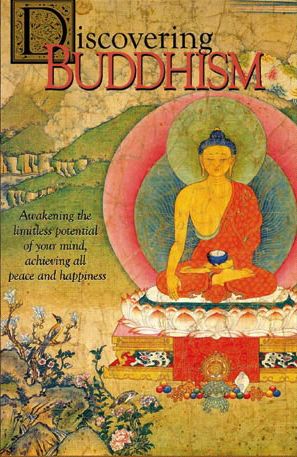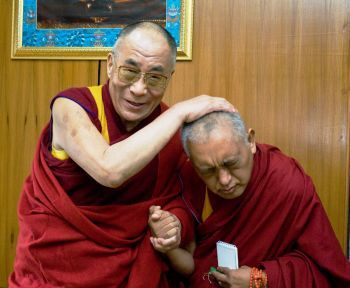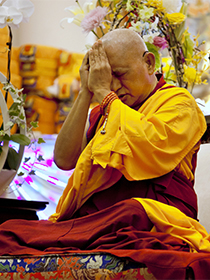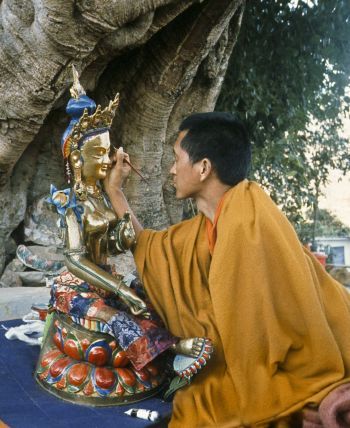- Home
- FPMT Homepage
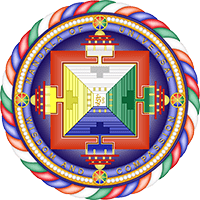
Foundation for the Preservation of the Mahayana Tradition
The FPMT is an organization devoted to preserving and spreading Mahayana Buddhism worldwide by creating opportunities to listen, reflect, meditate, practice and actualize the unmistaken teachings of the Buddha and based on that experience spreading the Dharma to sentient beings. We provide integrated education through which people’s minds and hearts can be transformed into their highest potential for the benefit of others, inspired by an attitude of universal responsibility and service. We are committed to creating harmonious environments and helping all beings develop their full potential of infinite wisdom and compassion. Our organization is based on the Buddhist tradition of Lama Tsongkhapa of Tibet as taught to us by our founders Lama Thubten Yeshe and Lama Thubten Zopa Rinpoche.
- Willkommen
Die Stiftung zur Erhaltung der Mahayana Tradition (FPMT) ist eine Organisation, die sich weltweit für die Erhaltung und Verbreitung des Mahayana-Buddhismus einsetzt, indem sie Möglichkeiten schafft, den makellosen Lehren des Buddha zuzuhören, über sie zur reflektieren und zu meditieren und auf der Grundlage dieser Erfahrung das Dharma unter den Lebewesen zu verbreiten.
Wir bieten integrierte Schulungswege an, durch denen der Geist und das Herz der Menschen in ihr höchstes Potential verwandelt werden zum Wohl der anderen – inspiriert durch eine Haltung der universellen Verantwortung und dem Wunsch zu dienen. Wir haben uns verpflichtet, harmonische Umgebungen zu schaffen und allen Wesen zu helfen, ihr volles Potenzial unendlicher Weisheit und grenzenlosen Mitgefühls zu verwirklichen.
Unsere Organisation basiert auf der buddhistischen Tradition von Lama Tsongkhapa von Tibet, so wie sie uns von unseren Gründern Lama Thubten Yeshe und Lama Thubten Zopa Rinpoche gelehrt wird.
- Bienvenidos
La Fundación para la preservación de la tradición Mahayana (FPMT) es una organización que se dedica a preservar y difundir el budismo Mahayana en todo el mundo, creando oportunidades para escuchar, reflexionar, meditar, practicar y actualizar las enseñanzas inconfundibles de Buda y en base a esa experiencia difundir el Dharma a los seres.
Proporcionamos una educación integrada a través de la cual las mentes y los corazones de las personas se pueden transformar en su mayor potencial para el beneficio de los demás, inspirados por una actitud de responsabilidad y servicio universales. Estamos comprometidos a crear ambientes armoniosos y ayudar a todos los seres a desarrollar todo su potencial de infinita sabiduría y compasión.
Nuestra organización se basa en la tradición budista de Lama Tsongkhapa del Tíbet como nos lo enseñaron nuestros fundadores Lama Thubten Yeshe y Lama Zopa Rinpoche.
A continuación puede ver una lista de los centros y sus páginas web en su lengua preferida.
- Bienvenue
L’organisation de la FPMT a pour vocation la préservation et la diffusion du bouddhisme du mahayana dans le monde entier. Elle offre l’opportunité d’écouter, de réfléchir, de méditer, de pratiquer et de réaliser les enseignements excellents du Bouddha, pour ensuite transmettre le Dharma à tous les êtres. Nous proposons une formation intégrée grâce à laquelle le cœur et l’esprit de chacun peuvent accomplir leur potentiel le plus élevé pour le bien d’autrui, inspirés par le sens du service et une responsabilité universelle. Nous nous engageons à créer un environnement harmonieux et à aider tous les êtres à épanouir leur potentiel illimité de compassion et de sagesse. Notre organisation s’appuie sur la tradition guéloukpa de Lama Tsongkhapa du Tibet, telle qu’elle a été enseignée par nos fondateurs Lama Thoubtèn Yéshé et Lama Zopa Rinpoché.
Visitez le site de notre Editions Mahayana pour les traductions, conseils et nouvelles du Bureau international en français.
Voici une liste de centres et de leurs sites dans votre langue préférée
- Benvenuto
L’FPMT è un organizzazione il cui scopo è preservare e diffondere il Buddhismo Mahayana nel mondo, creando occasioni di ascolto, riflessione, meditazione e pratica dei perfetti insegnamenti del Buddha, al fine di attualizzare e diffondere il Dharma fra tutti gli esseri senzienti.
Offriamo un’educazione integrata, che può trasformare la mente e i cuori delle persone nel loro massimo potenziale, per il beneficio di tutti gli esseri, ispirati da un’attitudine di responsabilità universale e di servizio.
Il nostro obiettivo è quello di creare contesti armoniosi e aiutare tutti gli esseri a sviluppare in modo completo le proprie potenzialità di infinita saggezza e compassione.
La nostra organizzazione si basa sulla tradizione buddhista di Lama Tsongkhapa del Tibet, così come ci è stata insegnata dai nostri fondatori Lama Thubten Yeshe e Lama Zopa Rinpoche.
Di seguito potete trovare un elenco dei centri e dei loro siti nella lingua da voi prescelta.
- 欢迎 / 歡迎
简体中文
“护持大乘法脉基金会”( 英文简称:FPMT。全名:Foundation for the Preservation of the Mahayana Tradition) 是一个致力于护持和弘扬大乘佛法的国际佛教组织。我们提供听闻,思维,禅修,修行和实证佛陀无误教法的机会,以便让一切众生都能够享受佛法的指引和滋润。
我们全力创造和谐融洽的环境, 为人们提供解行并重的完整佛法教育,以便启发内在的环宇悲心及责任心,并开发内心所蕴藏的巨大潜能 — 无限的智慧与悲心 — 以便利益和服务一切有情。
FPMT的创办人是图腾耶喜喇嘛和喇嘛梭巴仁波切。我们所修习的是由两位上师所教导的,西藏喀巴大师的佛法传承。
繁體中文
護持大乘法脈基金會”( 英文簡稱:FPMT。全名:Found
ation for the Preservation of the Mahayana Tradition ) 是一個致力於護持和弘揚大乘佛法的國際佛教組織。我們提供聽聞, 思維,禪修,修行和實證佛陀無誤教法的機會,以便讓一切眾生都能 夠享受佛法的指引和滋潤。 我們全力創造和諧融洽的環境,
為人們提供解行並重的完整佛法教育,以便啟發內在的環宇悲心及責 任心,並開發內心所蘊藏的巨大潛能 — 無限的智慧與悲心 – – 以便利益和服務一切有情。 FPMT的創辦人是圖騰耶喜喇嘛和喇嘛梭巴仁波切。
我們所修習的是由兩位上師所教導的,西藏喀巴大師的佛法傳承。 察看道场信息:
- FPMT Homepage
- News/Media
-
- Study & Practice
-
-
- About FPMT Education Services
- Latest News
- Programs
- New to Buddhism?
- Buddhist Mind Science: Activating Your Potential
- Heart Advice for Death and Dying
- Discovering Buddhism
- Living in the Path
- Exploring Buddhism
- FPMT Basic Program
- FPMT Masters Program
- FPMT In-Depth Meditation Training
- Maitripa College
- Lotsawa Rinchen Zangpo Translator Program
- Universal Education for Compassion & Wisdom
- Online Learning Center
-
- Prayers & Practice Materials
- Overview of Prayers & Practices
- Full Catalogue of Prayers & Practice Materials
- Explore Popular Topics
- Benefiting Animals
- Chenrezig Resources
- Death & Dying Resources
- Lama Chopa (Guru Puja)
- Lama Zopa Rinpoche: Compendium of Precious Instructions
- Lama Zopa Rinpoche: Life Practice Advice
- Lama Zopa Rinpoche Practice Series
- Lamrim Resources
- Mantras
- Prayer Book Updates
- Purification Practices
- Sutras
- Thought Transformation (Lojong)
- Audio Materials
- Dharma Dates - Tibetan Calendar
- Translation Services
- Publishing Services
- Ways to Offer Support
- Prayers & Practice Materials
-
- Teachings and Advice
- Find Teachings and Advice
- Lama Zopa Rinpoche Advice Page
- Lama Zopa Rinpoche: Compendium of Precious Instructions
- Lama Zopa Rinpoche Video Teachings
- ༧སྐྱབས་རྗེ་བཟོད་པ་རིན་པོ་ཆེ་མཆོག་ནས་སྩལ་བའི་བཀའ་སློབ་བརྙན་འཕྲིན།
- Podcasts
- Lama Yeshe Wisdom Archive
- Buddhism FAQ
- Dharma for Young People
- Resources on Holy Objects
- Teachings and Advice
-
-
*If a menu item has a submenu clicking once will expand the menu clicking twice will open the page.
-
-
- Centers
-
- Teachers
-
- Projects
-
-
-
-
*If a menu item has a submenu clicking once will expand the menu clicking twice will open the page.
-
-
- FPMT
-
-
-
-
-
If you know the psychological nature of your own mind, depression is spontaneously dispelled; instead of being enemies and strangers, all living beings become your friends. The narrow mind rejects; wisdom accepts. Check your own mind to see whether or not this is true.
Lama Thubten Yeshe
-
-
-
- Shop
-
-
-
The Foundation Store is FPMT’s online shop and features a vast selection of Buddhist study and practice materials written or recommended by our lineage gurus. These items include homestudy programs, prayers and practices in PDF or eBook format, materials for children, and other resources to support practitioners.
Items displayed in the shop are made available for Dharma practice and educational purposes, and never for the purpose of profiting from their sale. Please read FPMT Foundation Store Policy Regarding Dharma Items for more information.
-
-

Resources on Holy Objects
In the Buddhist tradition, objects become “holy” when they contain the presence of a buddha’s holy body, holy speech or holy mind.
There are several ways in which to engage with holy objects. You can make offerings to, prostrate toward, and circumambulate holy objects that already exist; create holy objects that become future sources of blessings to others; and also help sponsor a holy object initiative with volunteer time, money, or prayers. All of these activities, because they are done in relation to holy objects, become incredibly powerful acts of virtue.
Holy objects can even be used to benefit animals. You can help animals to circumambulate holy objects; gently touch the crowns of their heads with your stupas, statues, and tsa-tsas; or recite mantras for them.
Below you can find general information about various kinds of holy objects, as well as links to advice, resources, and ways to sponsor or support the creation of holy objects.
Prayer wheels are filled with mantras traditionally printed on strips of paper and tightly rolled around the core. These days mantras are reproduced onto microfilm—the more mantras, the more powerful. Prayer wheels can be small enough to be held in the hand or fit on a table, or can be very large enough to contain trillions of mantras.
Information About and Benefits of Prayer Wheels
- The Benefits of Making Prayer Wheels by Lama Zopa Rinpoche
- “The Benefits of Prayer Wheels” by Lama Zopa Rinpoche
- Wheel of Great Compassion: The Practice of the Prayer Wheel in Tibetan Buddhism edited by Lorne Ladner, Foreword by Lama Zopa Rinpoche
- How to fill a prayer wheel with microfilm
How to Sponsor Prayer Wheels
The Prayer Wheel Fund, one of our FPMT Charitable Projects, is dedicated to providing the resources needed for the creation of 100,000 prayer wheels around the world as a way to increase compassion and cultivate world peace. This is one of Lama Zopa Rinpoche’s Vast Visions for FPMT.
Unique to the Himalayas, prayer flags are pieces of cloth stamped with mantras and images, either in a pattern of five colors (blue, white, red, green and yellow) horizontally on a long string, or a single narrow vertical flag on a pole. Prayer flags are flown on auspicious days for different reasons including the removal of obstacles or illness; protection against harm when traveling; and on important occasions such as the third day of the Tibetan New Year, marriages, and other official functions.
“Prayer Flags and Auspicious Days,” by Lama Zopa Rinpoche
Please refer to the Liberation Calendar for days appropriate for hanging prayer flags as obstacles can be experienced when hung on the wrong days of the Tibetan calendar.
Relics can include bone relics of a holy person or fragments of close physical possessions, such as robes, and can also include certain very blessed mantras found in sutras and tantras, known as dharmakaya relics (the actual presence of the enlightened mind in the world). The most visually unique relics in the Buddhist tradition, however, are the pearl-like crystals found among the cremation ashes of Buddhist masters. The relics are considered a result of the master’s special compassion and wisdom, and are often enshrined in stupas.
- An Essay on Relics by Lama Zopa Rinpoche
- The Benefits of Relics, advice from Lama Zopa Rinpoche
The Four Dharmakaya Relic Mantras
Leaving a statue empty is like offering nothing to the buddhas and can create obstacles. Therefore, it is important to put something inside the statue, even as little as a few mantras and some incense.
According to Lama Zopa Rinpoche, “The Four Dharmakaya Relic Mantras are the main mantras that give power to holy objects. They are what make holy objects most powerful and beneficial, and make it easy for sentient beings to purify negative karma and collective extensive merit. It is like having thousands of atomic bombs to purify negative karma.”
As such, FPMT Education Services has made available the Four Dharmakaya Relic Mantras, formatted for rolling. We also invite you to read, The Four Dharmakaya Relic Mantras and Their Benefits by Lama Zopa Rinpoche.
Stupas, one of the most ancient icons in Buddhist art, are powerful symbols of the mind’s limitless potential. In other words, they represent the mind of enlightenment. Stupas are filled with sacred images, mantras and the relics of holy beings. Originally fairly simply structures, stupas have undergone elaborate design changes as they have been embraced by new cultures.
There are eight different types of stupas, each of which commemorates different events in the life of the Buddha: Lotus Stupa, the birth of the Buddha; Enlightenment Stupa, the Buddha’s attainment of enlightenment; Auspicious Stupa with Many Doors, the Buddha’s turning the wheel of Dharma, and commonly referred to as a “Wheel-Turning” Stupa; Miraculous Feats Stupa, when the Buddha preformed miracles; Descent Stupa, the Buddha’s descent from Tushita heaven; Reconciliation Stupa, when the Buddha healed the schism of the Sangha, also known as the “Healing the Community” Stupa; Victory Stupa, prolonging the life of the Buddha, more commonly known as a long life or Namgyälma Stupa; and the Parinirvana Stupa, the Buddha’s passing into parinirvana.
Resources
Building or sponsoring a stupa is a very powerful way to accumulate merit and purify negative karma. Below are resources to help and inspire you to achieve your goals and complete your commitments related to stupas.
- “Padmasambhava’s Instruction on Offerings to Stupas,” translated by Lama Zopa Rinpoche
- “Lama Zopa Rinpoche’s Advice for Circumambulation.”
- Benefits and Practices Related to Statues and Stupas, Part 1, Part 2, and Part 3
- Circumambulating Holy Objects at Home
- Create Skies of Merit by Making Offerings and Circumambulating Stupas
- “The Incredible Blessings and Benefits of Holy Objects,” by Lama Zopa Rinpoche
- Microfilm for Stupas and Prayer Wheels
- Filling and Blessing Statues: Simple Instructions for Taking Care of Your Holy Object
How to Sponsor the Creation of Stupas
The Stupa Fund provides the resources needed for building 100,000 stupas around the world in order to create the cause for world peace. This is one of Lama Zopa Rinpoche’s Vast Visions for FPMT.
A Buddhist statue represents the holy body of a buddha. Buddhas are invited to abide in statues through a consecration ceremony. When this is complete, the statue is an actual embodiment of the Buddha, and should be respected as such.
Resources on Statues
- Benefits and Practices Related to Statues and Stupas, Part 1
- Benefits and Practices Related to Statues and Stupas, Part 2
- Benefits and Practices Related to Statues and Stupas, Part 3
- Filling and Blessing Statues: Simple Instructions
The Four Dharmakaya Relic Mantras
Leaving a statue empty is like offering nothing to the buddhas and can create obstacles. Therefore, it is important to put something inside the statue, even as little as a few mantras and some incense. According to Lama Zopa Rinpoche, “The Four Dharmakaya Relic Mantras are the main mantras that give power to holy objects. They are what make holy objects most powerful and beneficial, and make it easy for sentient beings to purify negative karma and collective extensive merit. It is like having thousands of atomic bombs to purify negative karma.”
As such, FPMT Education Services has made available the Four Dharmakaya Relic Mantras, formatted for rolling. We also invite you to read, The Four Dharmakaya Relic Mantras and Their Benefits by Lama Zopa Rinpoche.
How to Sponsor the Creation of Statues
We invite you to learn more about the Padmasambhava Project for Peace, the Maitreya Projects and the FPMT Holy Objects Fund, which provide ways to support and sponsor the creation of statues.
Thangkas are painted or appliquéd images of deities, venerated spiritual figures, or common religious symbols, usually framed by colorful brocade.
“You may think that a statue or thangka is just a statue or thangka,” Lama Zopa Rinpoche said, “but it is the transcendental wisdom of dharmakaya, which understands and directly sees absolute truth, as well as conventional truth.”
Thangka Events
- In 2011, Lama Zopa Rinpoche, through the Lama Zopa Rinpoche Bodhichitta Fund, commissioned a 55-foot by 40-foot high stitched appliquéd thangka of Guru Rinpoche (Padmasambhava) to be displayed at Lawudo Retreat Center, Nepal.
- Chenrezig Institute, Australia hosts an annual Chenrezig Festival on the anniversary of His Holiness’ visit to the center. At the event, students unfurl a very large 1,000-Arm Chenrezig thangka, make offerings, engage in Chenrezig practice, and watch a teaching from His Holiness the Dalai Lama.
- Istituto Lama Tzong Khapa, Italy, has a large Maitreya thangka that it shows during Buddha multiplying days (weather permitting) and during any great occasions at the center.
- Land of Medicine Buddha in California, USA, holds two large thangka events annually: Medicine Buddha Festival Day and Ksitigarbha Day.
- Lama Zopa Rinpoche was offered a large Medicine Buddha thangka from Mongolia, and it came out most beneficial in Rinpoche’s observation to offer it to Losang Dragpa Centre (LDC), Malaysia. LDC unveiled the thangka as part of their 1,000 Offerings Event, with Khenrinpoche Geshe Chonyi presiding.
Tsa-tsas are a form of Buddhist art that has flourished for centuries in the Himalayas, most notably Tibet. Like many Tibetan sacred objects, they are iconographic forms of various buddhas.
In Tibet, tsa-tsas are made with clay from the earth. These days, more modern and durable materials are used such as plaster or hydrostone.
Often, students are given a commitment to make 100,000 tsa-tsas of a particular buddha or meditational deity during their lifetime. Lama Zopa Rinpoche has said, “Making tsa-tsas pacifies obstacles, bad conditions, accidents, and sudden diseases like heart attacks and paralysis. By making tsa-tsas you pacify enemies, interferers, and harms. You accumulate all merit, purify all obscurations, and achieve the resultant three kayas in a future life.”
Resources
- The Preliminary Practice of Tsa-Tsas (pdf and ebook)
- Nalanda Monastery has an art workshop from which you can order a variety of tsa-tsa molds.
- Concise Guide for Filling and Consecrating your Holy Object
Other Advice and News About Holy Objects
- Lama Zopa Rinpoche’s Advice Page
- Lama Yeshe Wisdom Archive’s Online Advice Book
- “Essential Mantras for Holy Objects“ by Lama Zopa Rinpoche
- “Benefits of Having Many Holy Objects” by Lama Zopa Rinpoche
- Latest news about the Holy Objects Fund
- Tagged: holy objects
